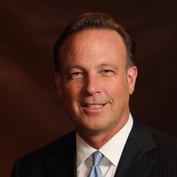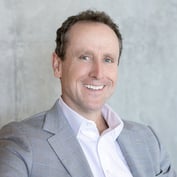“Figuring out how to service high-end clients over and above money management is something we’re constantly examining, and technology helps.”
That comment from Ray Mignone, president and COO of Ray Mignone and Associates in Little Neck, N.Y., kicked of a roundtable discussion of top advisors and industry executives about technology integration and practice management.
The roundtable, held at the National Association of Personal Financial Advisors (NAPFA) Spring Conference 2013 in Las Vegas on Wednesday, touched on the pressures RIAs are feeling in today’s business environment, the corresponding opportunities, how they use technology to reduce costs and grow their businesses and what advice they would give other advisors about technology integration.
“It’s still very much a fragmented industry,” added Michael Joyce, COO of JoycePayne Partners is Richmond, Va. “It’s tough for smaller firms to get access to capital, and we know costs are coming our way from a compliance standpoint. We have good cash flow in our firm, but we’re bootstrapping it. If we want to do a lift-out or acquire another firm, we’ll have to get serious.”
Carl Camp, president and COO of Eclectic & Associates in Fullerton, Calif. says he struggles with increasing efficiency while maintaining a personal touch.
“I try to drive as much as I can to paraplanners to free up my time for revenue-generating activity,” Camp said.
Jim Dario, managing director of product and strategy for TD Ameritrade Institutional, addressed Camp’s comment by noting the value of utilizing a CRM and the analytical capability it affords to identify who does what in a firm so administrative tasks can be moved from high-income-producing employees to lower-income-producing employees.
TD Ameritrade Institutional President Tom Nally pointed to how far technology has come in the past 10 to 15 years in terms of helping advisors grow their businesses.
“It’s absolutely amazing,” Nally said. “You could never manage this much money a decade ago. But technology development is happening so fast. What used to take 10 years to develop and release now takes two.”
Said Joyce: “But you have to keep up with [technology]. Being on the proverbial ‘bleeding edge,’ as we often are, is no longer a strategic advantage; it’s increasingly a requirement.”
Joyce said his firm’s tagline is “customized, personalized and innovative,” but the first two make it difficult to scale.
“Technology allows us to mass-produce customized service,” he said to general agreement.
The discussion moved away from the challenges advisors are facing to the opportunities they see.
Joyce said the industry’s move toward a fiduciary model from the broker-dealer model is one opportunity, adding it’s a “secular change” and that many firms now in business were lucky with the timing, as they are already “riding this wave.” He also named the opportunities younger generations afford his business. Dario asked Joyce about his process for reaching out to younger investors.
“We have a young lady that is 26 years old in our firm who is an emerging superstar,” Joyce responded. “She makes sure they’re aware of our blogs and takes the lead in communication with them.”
When asked if something like that can be automated and systematized, Dario said “it’s important for clients to work with advisors who are like them. There is tremendous opportunity for advisors in working with the next generation, and it doesn’t have to be the same model. How you work with the parents can differ from how you work with their children. But if you share that relationship, you’ve got them for another generation.”
Nally noted the “little things” that can go a long way, like holding seminars to teach them about finances.
“There has been a lot of talk about Ric Edelman lowering his minimums to $5,000,” Nally explained. “He’s doing that largely to stay top-of-mind. Most young people are thinking about buying a new car or going on vacation. If one of them gives Ric $5,000 instead, chances are they’re responsible and will be good clients.”
Dario added that boomer clients very much want to involve their kids; they want their tech-savvy kids to go online and research a car for them.
Nally asked the assembled advisors if they are seeing more informed clients since the financial crisis, specifically around the fee model.
Joyce answered that clients were asking more questions and doing more research, and he encourages that, “because just because we’re fee-only doesn’t mean we’re competent.”
Mignone added that they were doing research on the Internet about the advisor before ever picking up the phone to call.
“But so do we,” Joyce added. “I just had a woman come in whose husband recently passed away. I did some research and found out he was one of the country’s foremost experts in structural deficiencies, and worked on the Oklahoma City bombing and 9/11.”








 May 09, 2013 at 01:10 PM
May 09, 2013 at 01:10 PM









